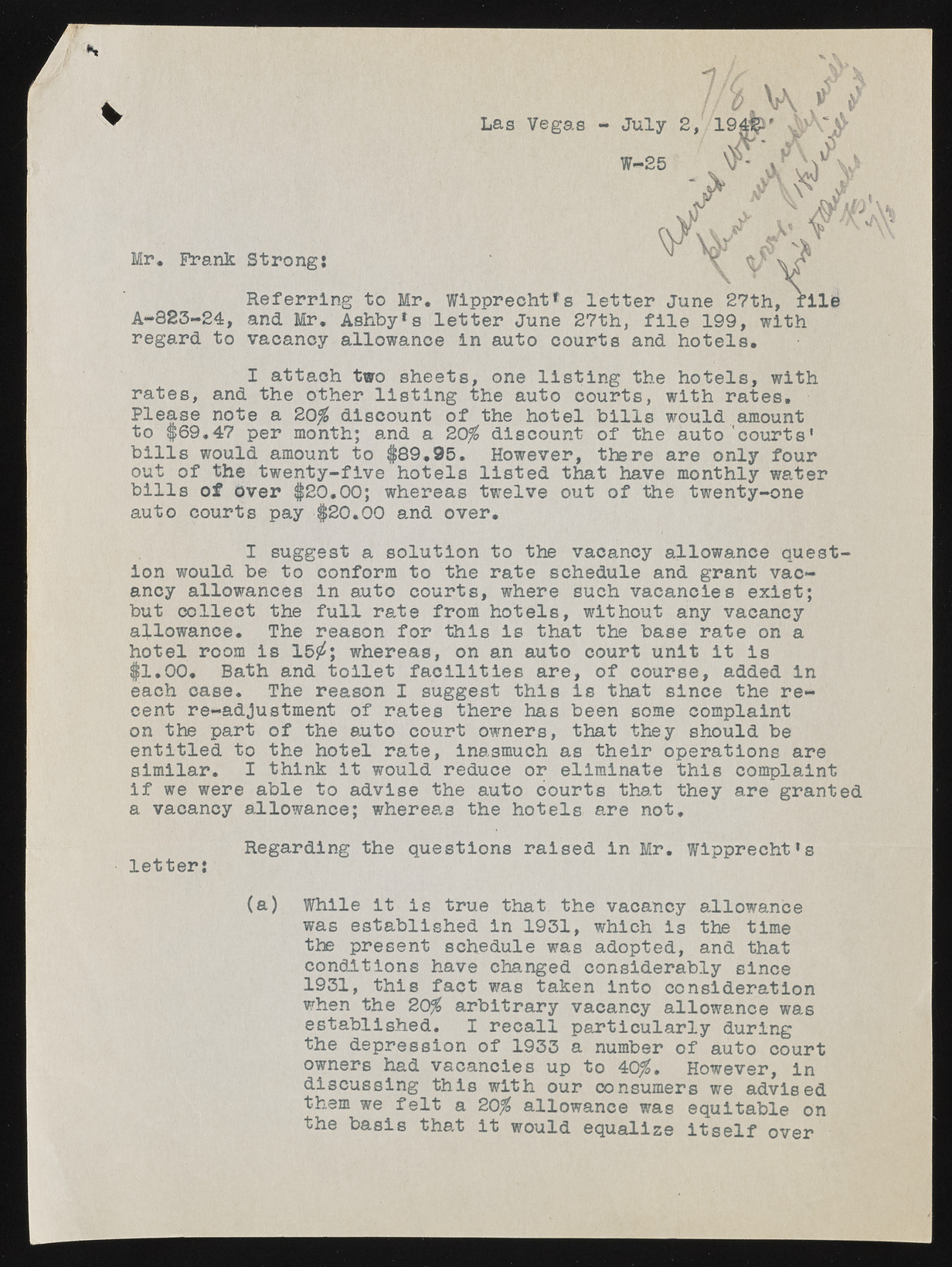Copyright & Fair-use Agreement
UNLV Special Collections provides copies of materials to facilitate private study, scholarship, or research. Material not in the public domain may be used according to fair use of copyrighted materials as defined by copyright law. Please cite us.
Please note that UNLV may not own the copyright to these materials and cannot provide permission to publish or distribute materials when UNLV is not the copyright holder. The user is solely responsible for determining the copyright status of materials and obtaining permission to use material from the copyright holder and for determining whether any permissions relating to any other rights are necessary for the intended use, and for obtaining all required permissions beyond that allowed by fair use.
Read more about our reproduction and use policy.
I agree.Information
Digital ID
Permalink
Details
More Info
Rights
Digital Provenance
Publisher
Transcription
V Mr. Prank Strong Las Vegas - Jul; W—2! Referring to Mr. Wipprecht*s letter June 27th, rile A-823-24, and Mr. Ashby*s letter June 27th, file 199, with regard to vacancy allowance In auto courts and hotels. I attach two sheets, one listing the hotels, with rates, and the other listing the auto courts, with rates. Please note a 20$ discount of the hotel bills would amount to $69.47 per month; and a 20$ discount of the auto 'courts' bills would amount to $>89.95. However, there are only four out of the twenty-five hotels listed that have monthly water bills of over $2 0 .00; whereas twelve out of the twenty-one auto courts pay $2 0 .0 0 and over. I suggest a solution to the vacancy allowance quest ion would be to conform to the rate schedule and grant vacancy allowances in auto courts, where such vacancies exist; but collect the full rate from hotels, without any vacancy allowance. The reason for this is that the base rate on a hotel room is 15^; whereas, on an auto court unit it is $1.00. Bath and toilet facilities are, of course, added in each case. The reason I suggest this is that since the recent re-adjustment of rates there has been some complaint on the part of the auto court owners, that they should be entitled to the hotel rate, inasmuch as their operations are similar. I think it would reduce or eliminate this complaint if we were able to advise the auto courts that they are granted a vacancy allowance; whereas the hotels are not. Regarding the questions raised in Mr. Wipprecht's letter; (a) While it is true that the vacancy allowance was established in 1931, which is the time the present schedule was adopted, and that conditions have changed considerably since 1931, this fact was taken into consideration when the 20$ arbitrary vacancy allowance was established. I recall particularly during the depression of 1933 a number of auto court owners had vacancies up to 40$. However, in discussing this with our consumers we advised them we felt a 20$ allowance was equitable on the basis that it would equalize itself over

